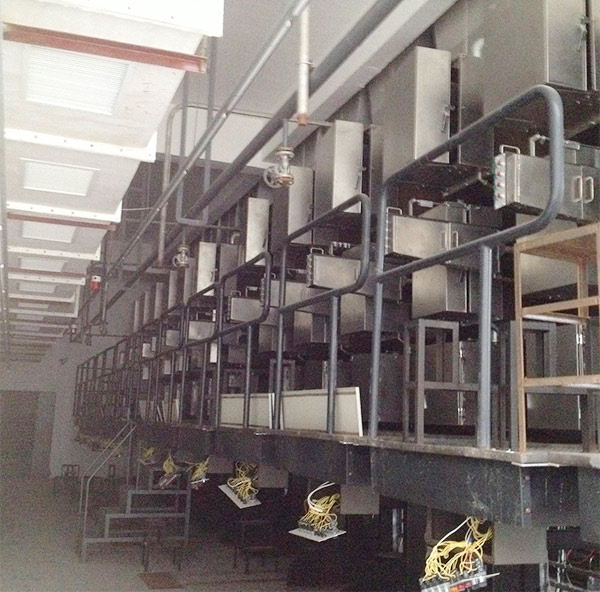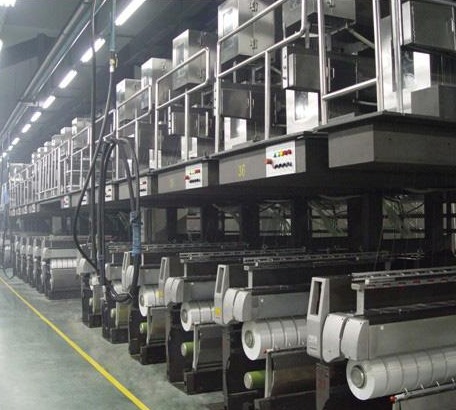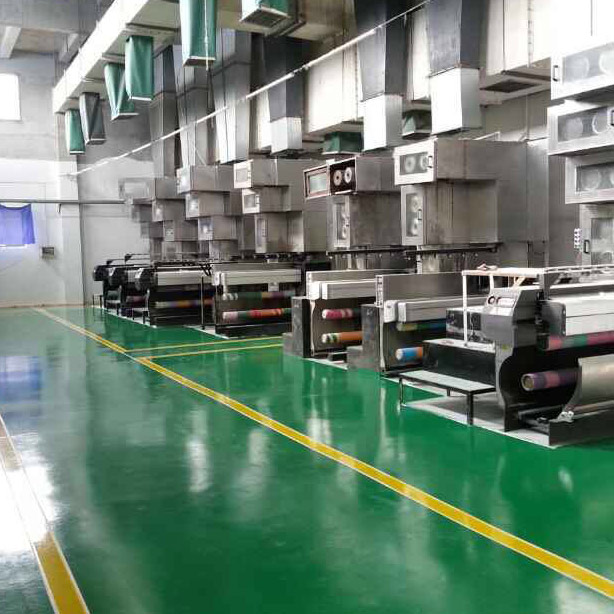- Polypropylene spinning machine
- Polypropylene FDY equipment
- Polyester POY spinning machine
- Polyamide FDY common and high strength equipment
- Polyester FDY equipment
- Polyester high strength equipment
- polyester、Polyamide、 Polypropylene BCF equipment
- Small spinning machine
- All kinds of spinning special parts
- Focus on six core modules to unlock new driving forces for the upgrading of the recycled fiber industry chain
- The China (Shishi) International Textile and Apparel Expo and the National Fashion Textile and Apparel Supply Chain Exhibition kicked off
- Argentina has lifted anti-dumping duties. The Textile Association has taken measures to break the deadlock and help foreign trade enterprises navigate the international market!
- Cotton textile industry fifteen five development guidance seminar was held in Anqing
- Explore the spinning machine: four functional areas, open the secret door of fiber production

- Contact:Mr. Huang Guofu
- Cel:0086-13901505556
- Fax:0086-519-83341119
- Email:czfb5556@126.com
- Add:No. 288-8 ChangLi Rd, Huangli Town, Changzhou, JS PRV.
February 10-13: The Textile Federation Industrial Cluster Working Committee conducted a special investigation on the impact of the epidemic on the pilot areas of the national textile and apparel industry cluster. The survey received valid questionnaires from 152 industrial cluster pilot areas. The key industry categories in the pilot areas involved spinning and weaving, apparel, printing and dyeing, knitting, home textiles and industrial textiles.
From the perspective of regional distribution, industrial clusters in the eastern region account for 81%, clusters in the central region account for 16%, and clusters in the western region account for 3%.
From the perspective of the industrial scale of the pilot areas, 9 of them have annual sales of more than 100 billion yuan, accounting for 5.92%; 23 have annual sales of 50-100 billion yuan, accounting for 15.13%; annual sales of 200-500 There are 29 companies with a total of 100 million yuan, accounting for 19.08%; 91 companies with an annual sales of less than 20 billion yuan, accounting for 59.87%.
In terms of the number of employees in the pilot areas, 15 of them have more than 200,000 employees, accounting for 9.87%; 8 of them have 150,000 to 200,000 employees, accounting for 5.26%; and those with 100,000 to 100,000 employees There are 19 companies, accounting for 12.5%; 37 companies with 50,000 to 100,000 employees, accounting for 24.34%; 73 companies with 50,000 or less employees, accounting for 48.03%.
The epidemic situation has a great impact on the income and profit of the cluster area in the first quarter, and the situation of resumption of production and production is not optimistic.
Research shows that as of February 13, 20:00, there are 30 industrial cluster pilot areas already in operation, accounting for about 20%. It is estimated that there will be about 31 pilot areas that can be started before February 17, accounting for about 20%. It is estimated that there will be 46 pilot regions starting by the end of February, accounting for about 30%. The other 30% depends on the progress of the epidemic, and the start time is yet to be determined.
It is estimated that by the end of February, about 38% of the pilot areas will be able to restore production capacity to 20% -50%; 50% -70% can be restored, 22%; more optimistic estimates can be restored to more than 70%, only There are 13 pilot areas, accounting for 8.55%.
The main reasons for the resumption of work and production in the affected areas are the top five: epidemic prevention and control, and inability to start full-scale work; employees cannot be in place and labor supply is insufficient; transportation and logistics are blocked; market demand is reduced and orders are insufficient; equipment, Insufficient supply of raw materials, etc.
From the perspective of the main business income in the first quarter, compared with the same period of the previous year, it is expected to decrease by about 30%, accounting for 38.82%; decrease by about 50%, accounting for 31.58%; decrease by more than 70%, accounting for 19.74%.
From the profit situation in the first quarter, compared with the same period of the previous year, 28.29% of the pilot areas will fall by more than 70%; 33.55% of the pilot areas will decline by about 50%; and 24.34% of the pilot areas will decline by about 30%. If the profit decline is within 10%, it is only 11.18%.
Taken together, the main issues affecting the sustainable development of the industrial economy in the first half of the year due to the epidemic situation include the top five: First, the problem of inadequate start-up of enterprises is difficult to improve (76.97%); second, the problem of insufficient labor supply is difficult to improve ( 74.34%); Third, it is difficult to improve transportation and logistics (65.79%); Fourth, it is difficult to improve supply chain resource coordination and raw and auxiliary materials procurement (61.84%); fifth, it is difficult to improve cash flow and financing channel problems (39.47 %).
There are also 13 pilot regions (8.55%), saying that after this "epidemic", the development of regional industries has been hit hard and there is a risk of exiting the market.
Changzhou Fubang Chemical Fiber Machinery Factory mainly produces: polypropylene spinning machine, polyester industrial silk spinning combined machine, polyester POY spinning machine, polypropylene FDY spinning machine, polypropylene FDY production line, polypropylene FDY equipment, polypropylene FDY machinery, polypropylene spinning Machine, polyester FDY spinning machine, polypropylene spinning machine, polyester FDY production line, polyester FDY machinery, nylon FDY spinning machine, polypropylene spinning machine.
- The China (Shishi) International Textile and Apparel Expo and the National Fashion Textile
- Focus on six core modules to unlock new driving forces for the upgrading of the recycled f
- Argentina has lifted anti-dumping duties. The Textile Association has taken measures to br
- Cotton textile industry fifteen five development guidance seminar was held in Anqing
- Explore the spinning machine: four functional areas, open the secret door of fiber product
- Manager must read | say goodbye to control management, release the potential of employees,
- Empower the traditional garment industry with digital technology
- Fubon Chemical fiber Polyester industrial silk spinning and drawing machine equipment: the
- Textile information | Industry empowerment, when calligraphy meets fabric, Keqiao textile'
- High performance carbon fiber and composite material technology and equipment seminar was




